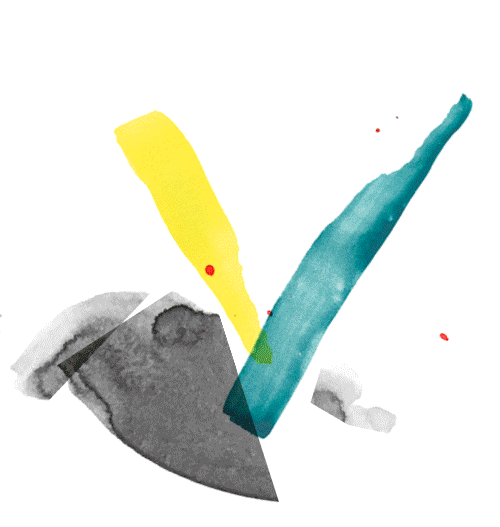

Sign up for our newsletters. You can change the settings or unsubscribe at any time.
Thank you for your subscription. We have sent you an e-mail with a confirmation link.


exp. 1
exp. 2
exp. 3

Pedro Moraleida Bernardes
Venue: KW Institute for Contemporary Art
Pedro Moraleida Bernardes
Born 1977 in Belo Horizonte, BR – died 1999 in Belo Horizonte
Pedro Moraleida Bernardes’ major series of works Faça Você Mesmo Sua Capela Sistina [Make Your Own Sistine Chapel, 1997/98] includes a work on paper titled after Rainer Werner Fassbinder’s film Liebe ist kälter als der Tod [Love is Colder than Death, 1969]. The film plot revolves around Frank, a hoodlum who refuses to accept an offer he cannot afford to turn down, and ends up becoming a target for a crime syndicate. This reference could perhaps be construed as reflecting the artist’s sense of himself as an outsider at odds with the art world and the work of his peers. Fellow students at Universidade Federal de Minas Gerais in the 1990s recall Moraleida Bernardes’ jarring dedication to scatological figuration and visceral plasticity at a time when the academy was overrun by rarefied conceptual gestures.
During his brief life, cut short by his suicide in 1999, Moraleida Bernardes produced a prolific body of work, comprising painting, sculpture, texts, and musical scores. Strongly influenced by Arthur Bispo do Rosário and Antonin Artaud, Moraleida Bernardes’ canon tends to revolve around isolated figures besieged by menacing lizard- or insect-like creatures in biblical scenes. Mimicking religious iconography, the artist reworked Neo-Expressionism’s mix of the sacred and the debased, and its grammar of angst, bawdiness, and disinhibition. Intimate with the work of Artaud, who wrote, “There where it smells of shit, it smells of being,” Moraleida Bernardes understood the scatological as the escathon, the ultimate end of all histories. Epic and abject, sex acts abound; they do not seem pleasurable but violent and mutilating. Friedrich Nietzsche, another important reference for Moraleida Bernardes, understood nihilism as, fundamentally, a problem of valuation: the devaluing of the highest values, God, moral law, civilization, progress. The question Moraleida Bernardes scrawls onto a drawing: “Quem e o quê devemos louvar” [Whom and what should we praise] could perhaps be understood as a structuring question, guiding a danse macabre between seekership, life, and denigrated values.
Ana Teixeira Pinto
II: La Solidaridad va Más Allá de un Concepto. Entre las Curadoras de la XI Berlin Biennale
Lisette Lagnado, Agustín Pérez Rubio
Conversation
A World Without Bones
Agustín Pérez Rubio
Solidarity and Storytelling. Rumors against Enclosure
María Berríos
Essay
Hatred Among Us
Lisette Lagnado
Essay
A Moment of True Decolonization / Episode #6: Sinthujan Varatharajah. Constructing the Tamil Eelam State
The Funambulist / Sinthujan Varatharajah
Podcast
COVID-19 VIDEOS
Carlos Motta
Video
By using this website you agree to the use of cookies in accordance with our data privacy policy.

Pedro Moraleida Bernardes
Venue: KW Institute for Contemporary Art
Pedro Moraleida Bernardes
Born 1977 in Belo Horizonte, BR – died 1999 in Belo Horizonte
Pedro Moraleida Bernardes’ major series of works Faça Você Mesmo Sua Capela Sistina [Make Your Own Sistine Chapel, 1997/98] includes a work on paper titled after Rainer Werner Fassbinder’s film Liebe ist kälter als der Tod [Love is Colder than Death, 1969]. The film plot revolves around Frank, a hoodlum who refuses to accept an offer he cannot afford to turn down, and ends up becoming a target for a crime syndicate. This reference could perhaps be construed as reflecting the artist’s sense of himself as an outsider at odds with the art world and the work of his peers. Fellow students at Universidade Federal de Minas Gerais in the 1990s recall Moraleida Bernardes’ jarring dedication to scatological figuration and visceral plasticity at a time when the academy was overrun by rarefied conceptual gestures.
During his brief life, cut short by his suicide in 1999, Moraleida Bernardes produced a prolific body of work, comprising painting, sculpture, texts, and musical scores. Strongly influenced by Arthur Bispo do Rosário and Antonin Artaud, Moraleida Bernardes’ canon tends to revolve around isolated figures besieged by menacing lizard- or insect-like creatures in biblical scenes. Mimicking religious iconography, the artist reworked Neo-Expressionism’s mix of the sacred and the debased, and its grammar of angst, bawdiness, and disinhibition. Intimate with the work of Artaud, who wrote, “There where it smells of shit, it smells of being,” Moraleida Bernardes understood the scatological as the escathon, the ultimate end of all histories. Epic and abject, sex acts abound; they do not seem pleasurable but violent and mutilating. Friedrich Nietzsche, another important reference for Moraleida Bernardes, understood nihilism as, fundamentally, a problem of valuation: the devaluing of the highest values, God, moral law, civilization, progress. The question Moraleida Bernardes scrawls onto a drawing: “Quem e o quê devemos louvar” [Whom and what should we praise] could perhaps be understood as a structuring question, guiding a danse macabre between seekership, life, and denigrated values.
Ana Teixeira Pinto
New Look
Flávio de Carvalho
Performance
III: La familia son quiénes se alegran con nuestros actos diarios. Detrás de las curadoras de la XI
María Berríos, Agustín Pérez Rubio
Conversation
BLM KOREA ARTS
#BlackLivesMatter #BLMKoreaArts
Young-jun Tak
Statement
Género y colonialidad en busca de claves de lectura y de un vocabulario estratégico descolonial
Rita Segato
Essay
Invitation to the Species: Cecilia Vicuña
Tamaas / Cecilia Vicuña
Podcast
II: La Solidaridad va Más Allá de un Concepto. Entre las Curadoras de la XI Berlin Biennale
Lisette Lagnado, Agustín Pérez Rubio
Conversation
By using this website you agree to the use of cookies in accordance with our data privacy policy.

Pedro Moraleida Bernardes
Venue: KW Institute for Contemporary Art
Pedro Moraleida Bernardes
Born 1977 in Belo Horizonte, BR – died 1999 in Belo Horizonte
Pedro Moraleida Bernardes’ major series of works Faça Você Mesmo Sua Capela Sistina [Make Your Own Sistine Chapel, 1997/98] includes a work on paper titled after Rainer Werner Fassbinder’s film Liebe ist kälter als der Tod [Love is Colder than Death, 1969]. The film plot revolves around Frank, a hoodlum who refuses to accept an offer he cannot afford to turn down, and ends up becoming a target for a crime syndicate. This reference could perhaps be construed as reflecting the artist’s sense of himself as an outsider at odds with the art world and the work of his peers. Fellow students at Universidade Federal de Minas Gerais in the 1990s recall Moraleida Bernardes’ jarring dedication to scatological figuration and visceral plasticity at a time when the academy was overrun by rarefied conceptual gestures.
During his brief life, cut short by his suicide in 1999, Moraleida Bernardes produced a prolific body of work, comprising painting, sculpture, texts, and musical scores. Strongly influenced by Arthur Bispo do Rosário and Antonin Artaud, Moraleida Bernardes’ canon tends to revolve around isolated figures besieged by menacing lizard- or insect-like creatures in biblical scenes. Mimicking religious iconography, the artist reworked Neo-Expressionism’s mix of the sacred and the debased, and its grammar of angst, bawdiness, and disinhibition. Intimate with the work of Artaud, who wrote, “There where it smells of shit, it smells of being,” Moraleida Bernardes understood the scatological as the escathon, the ultimate end of all histories. Epic and abject, sex acts abound; they do not seem pleasurable but violent and mutilating. Friedrich Nietzsche, another important reference for Moraleida Bernardes, understood nihilism as, fundamentally, a problem of valuation: the devaluing of the highest values, God, moral law, civilization, progress. The question Moraleida Bernardes scrawls onto a drawing: “Quem e o quê devemos louvar” [Whom and what should we praise] could perhaps be understood as a structuring question, guiding a danse macabre between seekership, life, and denigrated values.
Ana Teixeira Pinto
II: La Solidaridad va Más Allá de un Concepto. Entre las Curadoras de la XI Berlin Biennale
Lisette Lagnado, Agustín Pérez Rubio
Conversation
Hatred Among Us
Lisette Lagnado
Essay
A Moment of True Decolonization / Episode #6: Sinthujan Varatharajah. Constructing the Tamil Eelam State
The Funambulist / Sinthujan Varatharajah
Podcast
Feminist Health Care Research Group
Web archive
Being in Crisis together – Einander in Krisen begegnen
Feminist Health Care Research Group (Inga Zimprich/Julia Bonn)
Online workshop
El primer nueva corónica y buen gobierno
Felipe Guamán Poma de Ayala
Chronicle
By using this website you agree to the use of cookies in accordance with our data privacy policy.

Pedro Moraleida Bernardes
Venue: KW Institute for Contemporary Art
Pedro Moraleida Bernardes
Born 1977 in Belo Horizonte, BR – died 1999 in Belo Horizonte
Pedro Moraleida Bernardes’ major series of works Faça Você Mesmo Sua Capela Sistina [Make Your Own Sistine Chapel, 1997/98] includes a work on paper titled after Rainer Werner Fassbinder’s film Liebe ist kälter als der Tod [Love is Colder than Death, 1969]. The film plot revolves around Frank, a hoodlum who refuses to accept an offer he cannot afford to turn down, and ends up becoming a target for a crime syndicate. This reference could perhaps be construed as reflecting the artist’s sense of himself as an outsider at odds with the art world and the work of his peers. Fellow students at Universidade Federal de Minas Gerais in the 1990s recall Moraleida Bernardes’ jarring dedication to scatological figuration and visceral plasticity at a time when the academy was overrun by rarefied conceptual gestures.
During his brief life, cut short by his suicide in 1999, Moraleida Bernardes produced a prolific body of work, comprising painting, sculpture, texts, and musical scores. Strongly influenced by Arthur Bispo do Rosário and Antonin Artaud, Moraleida Bernardes’ canon tends to revolve around isolated figures besieged by menacing lizard- or insect-like creatures in biblical scenes. Mimicking religious iconography, the artist reworked Neo-Expressionism’s mix of the sacred and the debased, and its grammar of angst, bawdiness, and disinhibition. Intimate with the work of Artaud, who wrote, “There where it smells of shit, it smells of being,” Moraleida Bernardes understood the scatological as the escathon, the ultimate end of all histories. Epic and abject, sex acts abound; they do not seem pleasurable but violent and mutilating. Friedrich Nietzsche, another important reference for Moraleida Bernardes, understood nihilism as, fundamentally, a problem of valuation: the devaluing of the highest values, God, moral law, civilization, progress. The question Moraleida Bernardes scrawls onto a drawing: “Quem e o quê devemos louvar” [Whom and what should we praise] could perhaps be understood as a structuring question, guiding a danse macabre between seekership, life, and denigrated values.
Ana Teixeira Pinto
By using this website you agree to the use of cookies in accordance with our data privacy policy.
By using this website you agree to the use of cookies in accordance with our data privacy policy.




